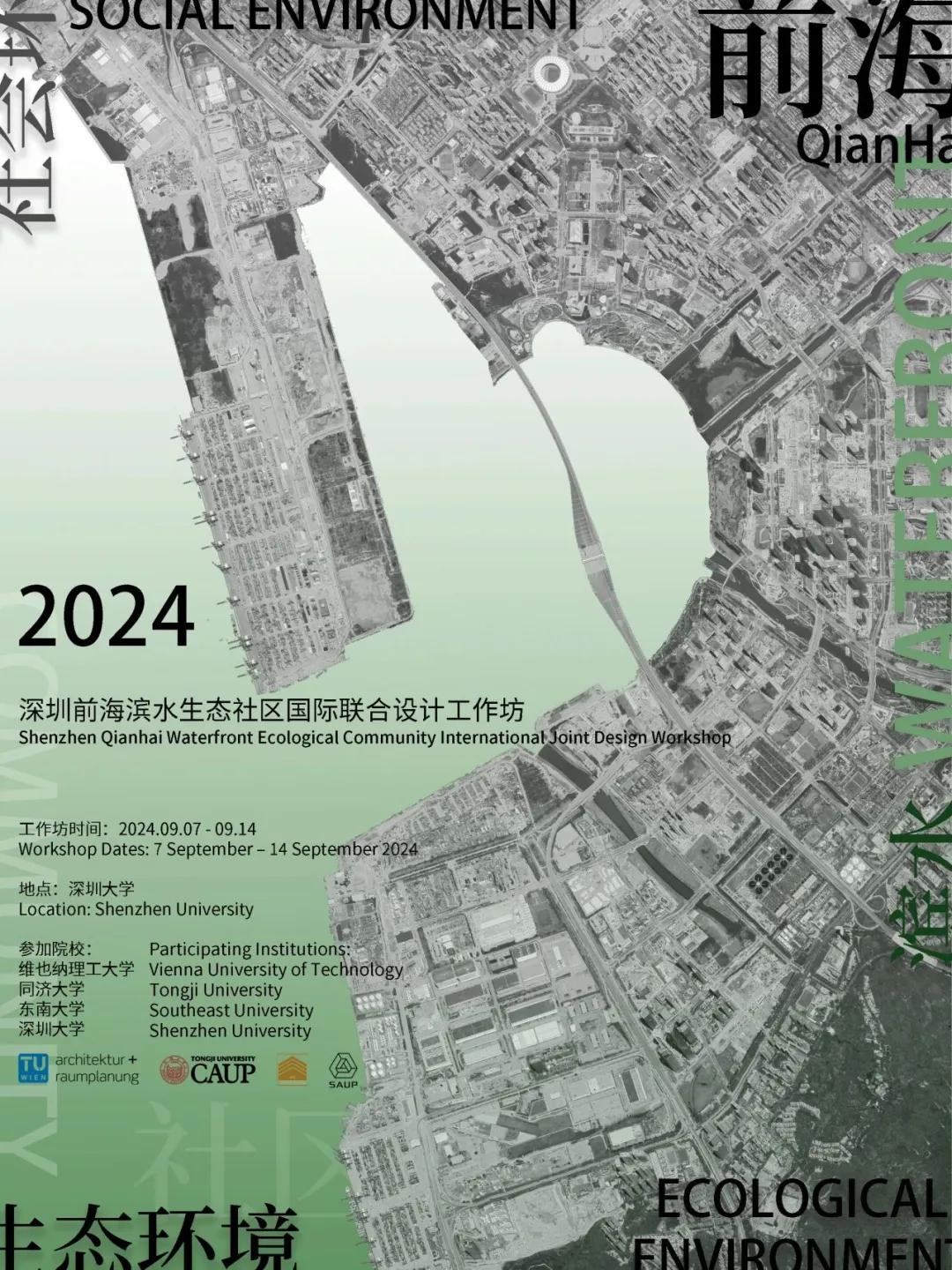
参加院校 / Participating Institutions
维也纳理工大学
Vienna University of Technology
同济大学
Tongji University
东南大学
Southeast University
深圳大学
Shenzhen University
指导老师 / Instructors
Kurt Wenjinger、 唐斌、 王一名、 杨镇源、 万欣宇
Kurt Wenjinger, Tang Bin, Wang Yiming, Yang Zhenyuan, Wan Xinyu
关于工作坊
About the Workshop
建筑与城市国际联合设计工作坊课程基于“中奥四校联合城市设计营”的联合教学协议开展,由维也纳理工大学,东南大学、同济大学和深圳大学联合创办发起于 2002 年。 城市设计营一年一度,由各个学校轮流作为东道主来选题和组织。设计营关注的焦点 是中国与奥地利两国近十年来共同面临的城市问题,通过 10 多天的短期交流与设计, 汇聚四校学生与老师的创意与努力,形成最终课程设计研究成果。
The International Joint Design Workshop on Architecture and Urbanism is conducted under the "Sino-Austrian Joint Urban Design Camp" agreement, established by the Vienna University of Technology, Southeast University, Tongji University, and Shenzhen University in 2002. The Urban Design Camp is an annual event, with each participating university taking turns to host and organize the topic. The camp focuses on urban issues that China and Austria have commonly faced over the past decade. Through more than 10 days of intensive exchange and design, the workshop harnesses the creativity and efforts of students and professors from all four universities to produce final design research outcomes.
研究背景
Research Background
回顾深圳的发展可以发现,深圳一直在往多心多轴的组团网络型城市发展。从一开始的罗湖中心, 到后来的福田中心,而深圳西部发展城市新中心的趋势也日益明显。深圳市新版总体 规提出建设大前海中心与福田-罗湖中心,两心功能各有侧重,形成深圳全域两大发展核心。其中,前海中心即为城市双中心之一,承担城市和区域的高端服务功能。 深圳前海中心由宝安中心区、桂湾片区、前湾片区、妈湾片区四大功能片区组成。其中妈湾片区:重点发展现代物流、航运服务、供应链管理、创新金融及其他专业服务业等产业,打造具备区域生产组织中枢和国际供应链管理中心功能的保税港片区。自2012开始,前海的规划发展已进行了10多年。在累积一定的经验和根据社会、市场环境情况,妈湾片区的城市设计目标变得更为明确,拟打造为前海深港国际服务城。
Reviewing Shenzhen's development reveals a consistent trend towards evolving into a multi-core, multi-axis networked city. From the initial focus on the Luohu center to the subsequent development of the Futian center, the emergence of a new urban center in the western part of Shenzhen has become increasingly evident. The latest master plan for Shenzhen proposes the construction of the Greater Qianhai Center alongside the Futian Ruohu Center, with each serving distinct functions, thus forming two major development cores for the entire city. Qianhai Center, one of the city's dual centers, is tasked with providing high-end urban and regional services. The Qianhai Center comprises four major functional areas: the Bao'an Central District, Guiwan District, Qianwan District, and Mawan District. Specifically, the Mawan District is focused on the development of modern logistics, shipping services, supply chain management, innovative finance, and other professional service industries. It aims to establish itself as a bonded port area functioning as a central hub for regional production organization and international supply chain management. Since the planning of Qianhai began in 2012, over a decade of development has ensued, accumulating substantial experience and insight into the socio-economic and market conditions. As a result, the urban design goals for the Mawan District have become more defined, with an ambition to transform it into the Qianhai Shenzhen-Hong Kong International Service City.







 Sitemap
Sitemap




